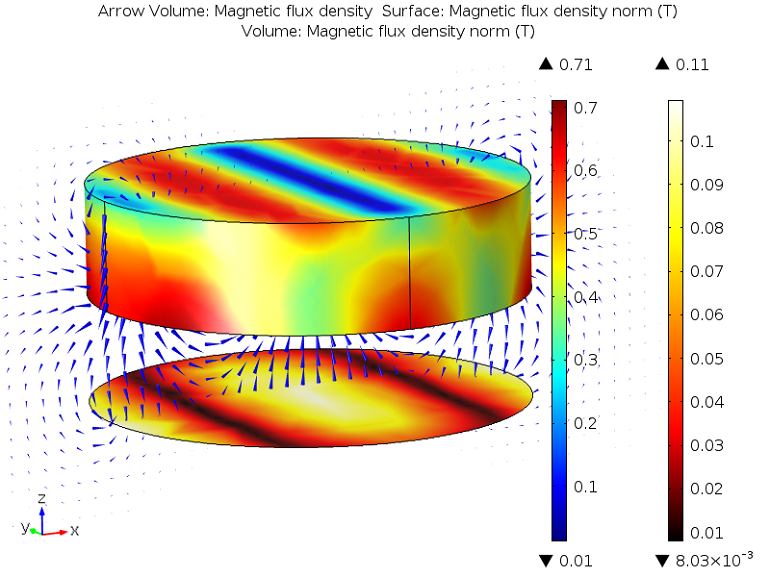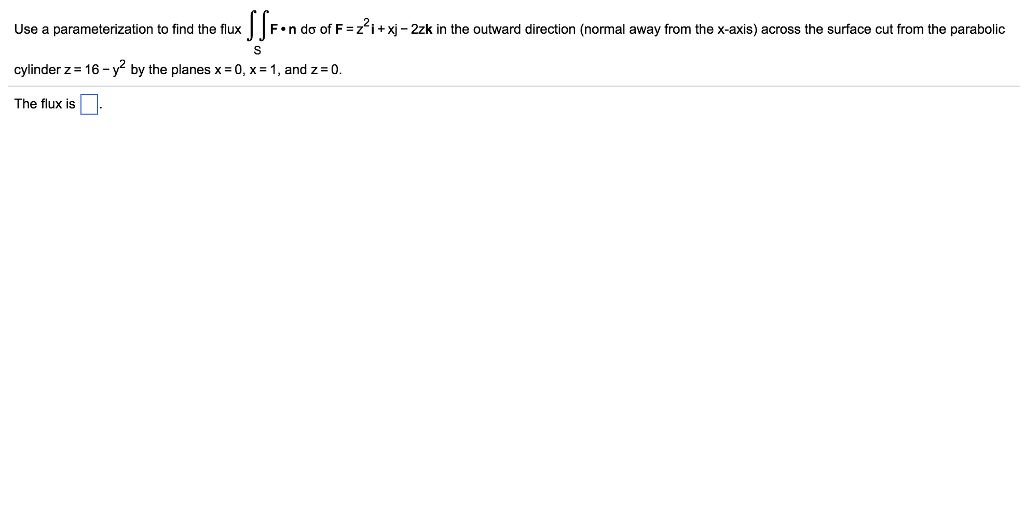

- #Calculate flux integral 3d how to
- #Calculate flux integral 3d update
- #Calculate flux integral 3d free
You may also find the following Physics calculators useful. at frequency gives the net rate of energy flow through a surface element.

This allows you to learn about Electrostatics and test your knowledge of Physics by answering the test questions on Electrostatics. At the end of each Electrostatics tutorial you will find Electrostatics revision questions with a hidden answer that reveals when clicked.
#Calculate flux integral 3d how to
Each Electrostatics tutorial includes detailed Electrostatics formula and example of how to calculate and resolve specific Electrostatics questions and problems.
#Calculate flux integral 3d free
The following Physics tutorials are provided within the Electrostatics section of our Free Physics Tutorials. Then the unit normal vector is k and surface integral. Suppose surface S is a flat region in the xy -plane with upward orientation. Note that the orientation of the curve is positive. While line integrals allow us to integrate a vector field F: R2 R2 along a curve C that is parameterized by p (t) x(t),y(t) : C F dp. Please provide a rating, it takes seconds and helps us to keep this resource free for all to useĮlectrostatics Physics Tutorials associated with the Electric Flux Calculator Figure 16.7.1: Stokes’ theorem relates the flux integral over the surface to a line integral around the boundary of the surface. To compute the flow across a surface, also known as flux, we’ll use a surface integral.

We believe everyone should have free access to Physics educational material, by sharing you help us reach all Physics students and those interested in Physics across the globe. This allows us to allocate future resource and keep these Physics calculators and educational material free for all to use across the globe. We hope you found the Electric Flux Calculator useful with your Physics revision, if you did, we kindly request that you rate this Physics calculator and, if you have time, share to your favourite social network. The total flux of a smooth vector field F through S is given by. Let the smooth surface,, S, be parametrized by r ( s, t) over a domain. It also reports an incorrect result when calculating the flux of a vector field through the surface of this ellipsoid. A flux integral of a vector field,, F, on a surface in space,, S, measures how much of F goes through. It also reports an incorrect result when calculating the flux of a vector field through the surface of this ellipsoid. Flux integrals of vector fields that can be written as the curl of a vector field are surface independent in the same way that line integrals of vector fields that can be written as the gradient of a scalar function are path independent. The VectorCalculus package in Maple 18 exhibits some rather odd behaviour when calculating an integral over a 3D-domain (an elipsoid centered at (0,0,1) with length of semi-axes 2, 2, and 1) given by a Region. You can then email or print this electric flux calculation as required for later use. The VectorCalculus package in Maple 18 exhibits some rather odd behaviour when calculating an integral over a 3D-domain (an elipsoid centered at (0,0,1) with length of semi-axes 2, 2, and 1) given by a 'Region'. Therefore, the flux integral of G does not depend on the surface, only on the boundary of the surface. The rate at which volume of fluid is crossing through a surface S is the flux integral.
#Calculate flux integral 3d update
As you enter the specific factors of each electric flux calculation, the Electric Flux Calculator will automatically calculate the results and update the Physics formula elements with each element of the electric flux calculation.

Please note that the formula for each calculation along with detailed calculations are available below. Surface area Note 1 ( |A|) m 2 Īngle between electric field lines and the area vector ( θ) ° Įlectric constant or vacuum permittivity ( ϵ 0) C 2/N∙m 2 Based on Figure 6.90, we see that if we place this cube in the fluid (as long as the cube doesn’t encompass the origin), then the rate of fluid entering the cube is the same as the rate of fluid exiting the cube. Before calculating this flux integral, let’s discuss what the value of the integral should be. The electric flux through a closed surface when the charge is given using the Gauss Law isĮlectric flux calculations for inward fluxĮlectric flux calculations for outward flux The flow rate of the fluid across S is S v d S. The electric flux (outward flux) through a closed surface when electric field is given is V ∙ m Electric Flux (Gauss Law) Calculator Results (detailed calculations and formula below) The electric flux (inward flux) through a closed surface when electric field is given is V ∙ m


 0 kommentar(er)
0 kommentar(er)
